In January, I started an MFA in fiction. The idea was that I would learn how to write a novel, which I have been trying to do for some time and am still attempting. Happily, as a result, I’ve been forced to read widely and voraciously—and with an eye toward craft, structure, and form. It’s been a pleasure to read not as a critic, but as a student, trying to see how something so seamless as a book is made. Lately, I’ve tried to read books published more than five years ago, and this year, I found a lot of pleasure in dwelling in the backlist—though I made time for a few new books. Here are some titles out of the 50 (!) I read this year which I particularly enjoyed, with an especial shoutout to the Libby app, without which I would not have survived these pandemic times.
I began the year with Luster, or rather, still feeling the effects of having read Luster at the very end of 2020, which is why I feel I’m still allowed to place it on my 2021 list. I didn’t love the book the way I thought I might—in fact, at first, I didn’t like it at all—but as more time passed after reading, I realized I couldn’t stop thinking about it. My mind returns to it at strange moments; I’ve learned that some of the best books are the ones that linger.
 I properly kicked off the year with a reread of Min Jin Lee’s historical epic Pachinko. Even though I knew everything that was going to happen, it wrenched at me; on a re-read, I marveled at Lee’s dramatic pacing and the perils she puts her characters through. Few other novels have seemed to so accurately capture, with both historical sweep and granular detail, the effects of inherited and colonial trauma. Pachinko was followed by The Book of Salt by Monique Truong. One of the books I’m working on is partially set in Vietnam during the ’50s and ’60s. Though Truong’s novel takes place in the Paris of the ’20s and ’30s, I was curious to know about the lives of colonial-era Vietnamese people, and I wanted to see how other writers of historical fiction had handled their material. Truong’s text is a portrait of a man, Binh, a cook working in the house of Gertrude Stein. Though his story is so steeped in the circumstances of history, his narrative is written with such beauty and delicacy that it has the freshness of present life.
I properly kicked off the year with a reread of Min Jin Lee’s historical epic Pachinko. Even though I knew everything that was going to happen, it wrenched at me; on a re-read, I marveled at Lee’s dramatic pacing and the perils she puts her characters through. Few other novels have seemed to so accurately capture, with both historical sweep and granular detail, the effects of inherited and colonial trauma. Pachinko was followed by The Book of Salt by Monique Truong. One of the books I’m working on is partially set in Vietnam during the ’50s and ’60s. Though Truong’s novel takes place in the Paris of the ’20s and ’30s, I was curious to know about the lives of colonial-era Vietnamese people, and I wanted to see how other writers of historical fiction had handled their material. Truong’s text is a portrait of a man, Binh, a cook working in the house of Gertrude Stein. Though his story is so steeped in the circumstances of history, his narrative is written with such beauty and delicacy that it has the freshness of present life.
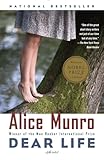

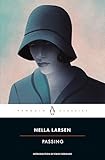 Everyone ought to read Alice Munro at least once, preferably in adulthood—this year, I read Dear Life, particularly for its semi-autobiographical stories, which appear in a section at the end of the collection. Munro does this incredible thing with time, where a story begins in one span, events happen briskly, and then, near the end of the story, in the last few pages, the narrative turns on its ear, and a whole, huge arc of time is opened—enough to reveal, or change, a life. Soon after, I read Beloved. Somehow I had gone my whole life without encountering it, and though I’m sad to have read it so late, I was floored by Morrison’s use of poetry and imagery—the scene where Paul D flees north, marked by the blooming of flowers, will stay with me for a long time. And though it’s zeitgeisty, I didn’t realize a movie was coming out later this year—I haven’t seen it yet—I managed to find an old copy of Passing by Nella Larsen, and was surprised by how contemporary it felt. That it resonates with audiences in 2021 makes perfect sense.
Everyone ought to read Alice Munro at least once, preferably in adulthood—this year, I read Dear Life, particularly for its semi-autobiographical stories, which appear in a section at the end of the collection. Munro does this incredible thing with time, where a story begins in one span, events happen briskly, and then, near the end of the story, in the last few pages, the narrative turns on its ear, and a whole, huge arc of time is opened—enough to reveal, or change, a life. Soon after, I read Beloved. Somehow I had gone my whole life without encountering it, and though I’m sad to have read it so late, I was floored by Morrison’s use of poetry and imagery—the scene where Paul D flees north, marked by the blooming of flowers, will stay with me for a long time. And though it’s zeitgeisty, I didn’t realize a movie was coming out later this year—I haven’t seen it yet—I managed to find an old copy of Passing by Nella Larsen, and was surprised by how contemporary it felt. That it resonates with audiences in 2021 makes perfect sense.

 Then I descended into what I think of as my autofiction phase. There was The Lover, set in colonial-era Vietnam, which I finally picked up after years of people insisting I read it—and I don’t know why I waited so long, it’s divine—and then, in quick succession, all the Annie Ernaux I could find. A Girl’s Story, Simple Passion, The Years. I was interested in what both authors do with point of view—how the self can be written from within and without.
Then I descended into what I think of as my autofiction phase. There was The Lover, set in colonial-era Vietnam, which I finally picked up after years of people insisting I read it—and I don’t know why I waited so long, it’s divine—and then, in quick succession, all the Annie Ernaux I could find. A Girl’s Story, Simple Passion, The Years. I was interested in what both authors do with point of view—how the self can be written from within and without.
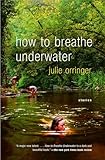 My first term instructor at Bennington, the poet and novelist Monica Ferrell, recommended How to Breathe Underwater, a collection of short stories by Julie Orringer, which I loved. The stories are so tightly crafted, and yet so awake to alive details, that they work perfectly. In keeping with the underwater theme, I read The Seas because my friend Hannah was reading it too—did everyone read The Seas this summer?—and devoured it.
My first term instructor at Bennington, the poet and novelist Monica Ferrell, recommended How to Breathe Underwater, a collection of short stories by Julie Orringer, which I loved. The stories are so tightly crafted, and yet so awake to alive details, that they work perfectly. In keeping with the underwater theme, I read The Seas because my friend Hannah was reading it too—did everyone read The Seas this summer?—and devoured it.

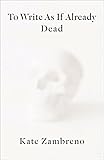 While on break for a month (around this time, my book also came out!), I had a moment to read two new books, Second Place by Rachel Cusk and To Write as if Already Dead by Kate Zambreno. I have a tendency to read by author, and had both Cusk and Zambreno deep-dives in 2020. Zambreno’s latest was fantastic, as always, and I was baffled by most of Second Place (The exclamation points! Who the hell is Jeffers!) until about the last 50 pages, when it blew my mind so thoroughly that I had to text everyone I knew telling them Rachel Cusk is a genius.
While on break for a month (around this time, my book also came out!), I had a moment to read two new books, Second Place by Rachel Cusk and To Write as if Already Dead by Kate Zambreno. I have a tendency to read by author, and had both Cusk and Zambreno deep-dives in 2020. Zambreno’s latest was fantastic, as always, and I was baffled by most of Second Place (The exclamation points! Who the hell is Jeffers!) until about the last 50 pages, when it blew my mind so thoroughly that I had to text everyone I knew telling them Rachel Cusk is a genius.


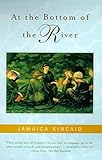 And then, somehow, it was June. Louise Erdrich’s The Round House cracked my writing life open. Something about not setting dialogue in quotations, letting the characters narrate for themselves—and the themes of justice and revenge that she explores feel so relevant today. Jean Rhys’s Wide Sargasso Sea—I’ve been interested in post-colonial literature, probably for obvious reasons—was so frank and so devastatingly good that I had to read it again the moment I finished it. As an antidote to Rhys, or perhaps as good medicine, I also read At the Bottom of the River, a slim, absolutely bewitching collection of short stories—maybe even prose poems—by Jamaica Kincaid. They convinced me that a story can travel on the power and pulse of a narrator’s voice alone.
And then, somehow, it was June. Louise Erdrich’s The Round House cracked my writing life open. Something about not setting dialogue in quotations, letting the characters narrate for themselves—and the themes of justice and revenge that she explores feel so relevant today. Jean Rhys’s Wide Sargasso Sea—I’ve been interested in post-colonial literature, probably for obvious reasons—was so frank and so devastatingly good that I had to read it again the moment I finished it. As an antidote to Rhys, or perhaps as good medicine, I also read At the Bottom of the River, a slim, absolutely bewitching collection of short stories—maybe even prose poems—by Jamaica Kincaid. They convinced me that a story can travel on the power and pulse of a narrator’s voice alone.
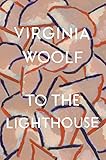
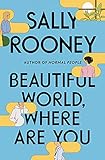 Perhaps the book that changed my writing life the most was To the Lighthouse by Virginia Woolf. I had tried for many years to appreciate the Modernists, not quite getting it, and then, somehow, through a mix of structure, experimentation, and enchanting metaphor, Woolf opened the door. I use open a lot to describe how reading affects my writing—it doesn’t create new material as much as it makes new paths for my mind to explore. With new possibilities in hand, I can return to my work with a fresh heart and lifted spirits. The very Woolfian portraits in Beautiful World, Where Are You may have had something to do with this, and my friend Michelle Taylor’s writing on the Modernists, particularly Hope Mirrlees, certainly did.
Perhaps the book that changed my writing life the most was To the Lighthouse by Virginia Woolf. I had tried for many years to appreciate the Modernists, not quite getting it, and then, somehow, through a mix of structure, experimentation, and enchanting metaphor, Woolf opened the door. I use open a lot to describe how reading affects my writing—it doesn’t create new material as much as it makes new paths for my mind to explore. With new possibilities in hand, I can return to my work with a fresh heart and lifted spirits. The very Woolfian portraits in Beautiful World, Where Are You may have had something to do with this, and my friend Michelle Taylor’s writing on the Modernists, particularly Hope Mirrlees, certainly did.
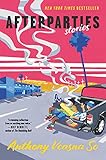
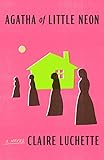 Two more 2021 books—I reviewed Afterparties by Anthony Veasna So for The Nation, and was so honored to have a chance to write about a Cambodian-American writer whose work revels in character and dialogue, though I’m sorely gutted by our (and literature’s) loss. On a trip to Iowa, I had just finished an e-book of Agatha of Little Neon by Claire Luchette, one of my favorite debuts this year, when we were driving from Grinnell to Iowa City and we were met with a vision of low, blinking red lights, all in unison, all the same height, as far as the eye could see. It’s a scene mirrored in Luchette’s novel: they’re the red lights of a wind farm, the windmills impossibly tall, the distance between them impossibly vast.
Two more 2021 books—I reviewed Afterparties by Anthony Veasna So for The Nation, and was so honored to have a chance to write about a Cambodian-American writer whose work revels in character and dialogue, though I’m sorely gutted by our (and literature’s) loss. On a trip to Iowa, I had just finished an e-book of Agatha of Little Neon by Claire Luchette, one of my favorite debuts this year, when we were driving from Grinnell to Iowa City and we were met with a vision of low, blinking red lights, all in unison, all the same height, as far as the eye could see. It’s a scene mirrored in Luchette’s novel: they’re the red lights of a wind farm, the windmills impossibly tall, the distance between them impossibly vast.
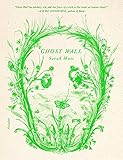
 This year, I learned to appreciate short books—books that are lean, each moment accounted for. I picked up a copy of Ghost Wall by Sarah Moss, on the strength of its cover alone; it’s one of the best things I’ve read this year, though I might be biased as I’ve lately been interested in Bronze Age history (though, it seems, re: Rooney, who hasn’t?). That was followed by Summerwater, also by Sarah Moss, which takes place in one day, though I found Ghost Wall’s spooky mysticism to be more enchanting.
This year, I learned to appreciate short books—books that are lean, each moment accounted for. I picked up a copy of Ghost Wall by Sarah Moss, on the strength of its cover alone; it’s one of the best things I’ve read this year, though I might be biased as I’ve lately been interested in Bronze Age history (though, it seems, re: Rooney, who hasn’t?). That was followed by Summerwater, also by Sarah Moss, which takes place in one day, though I found Ghost Wall’s spooky mysticism to be more enchanting.
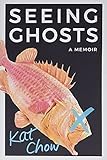
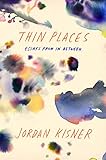 You’ll notice that this list is mostly fiction—I try to read essays and memoir when as I can, but usually what I encounter in my daily browsing (and procrastinating) is stand-alone pieces. I was lucky enough to get to read Kat Chow’s beautiful memoir Seeing Ghosts, in anticipation of a conversation we had together for her launch events. And I am closing the year with Thin Places by Jordan Kisner, an essay collection that is the most marvelous of its kind, incisive observation and reporting threaded together with insight.
You’ll notice that this list is mostly fiction—I try to read essays and memoir when as I can, but usually what I encounter in my daily browsing (and procrastinating) is stand-alone pieces. I was lucky enough to get to read Kat Chow’s beautiful memoir Seeing Ghosts, in anticipation of a conversation we had together for her launch events. And I am closing the year with Thin Places by Jordan Kisner, an essay collection that is the most marvelous of its kind, incisive observation and reporting threaded together with insight.
More from A Year in Reading 2021 (opens in a new tab)
Do you love Year in Reading and the amazing books and arts content that The Millions produces year round? We are asking readers for support to ensure that The Millions can stay vibrant for years to come. Please click here to learn about several simple ways you can support The Millions now.
Don’t miss: A Year in Reading 2020, 2019, 2018, 2017, 2016, 2015, 2014, 2013, 2012, 2011, 2010, 2009, 2008, 2007, 2006, 2005
The post A Year in Reading the Backlist: Larissa Pham appeared first on The Millions.











